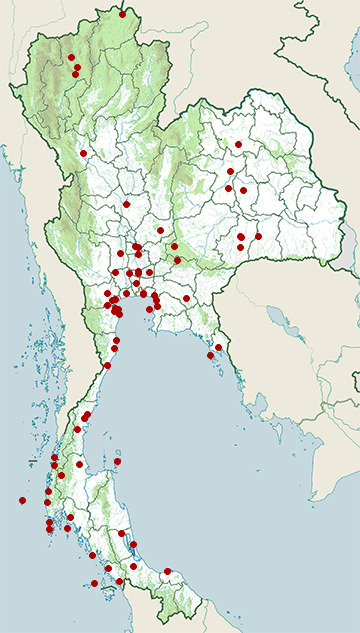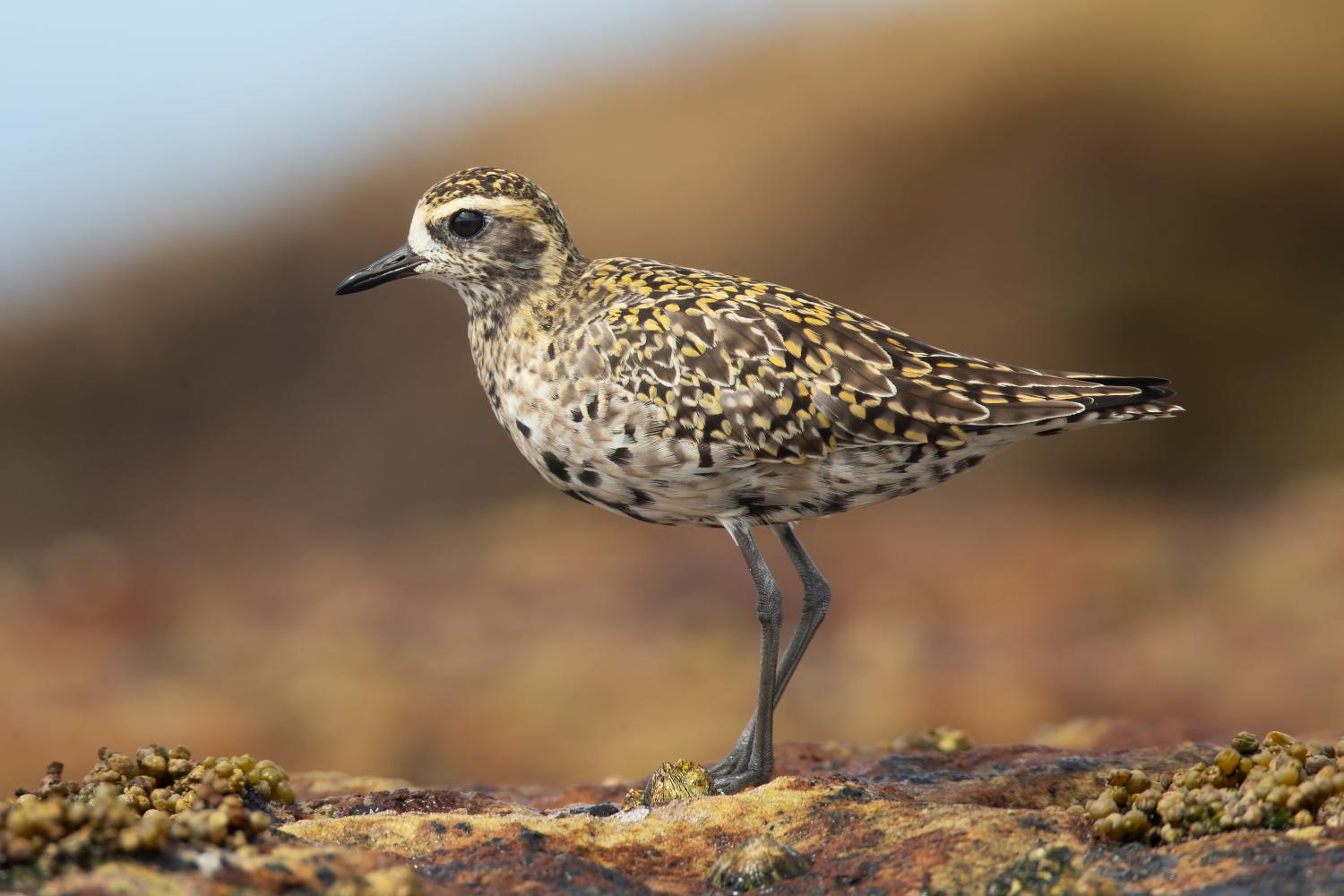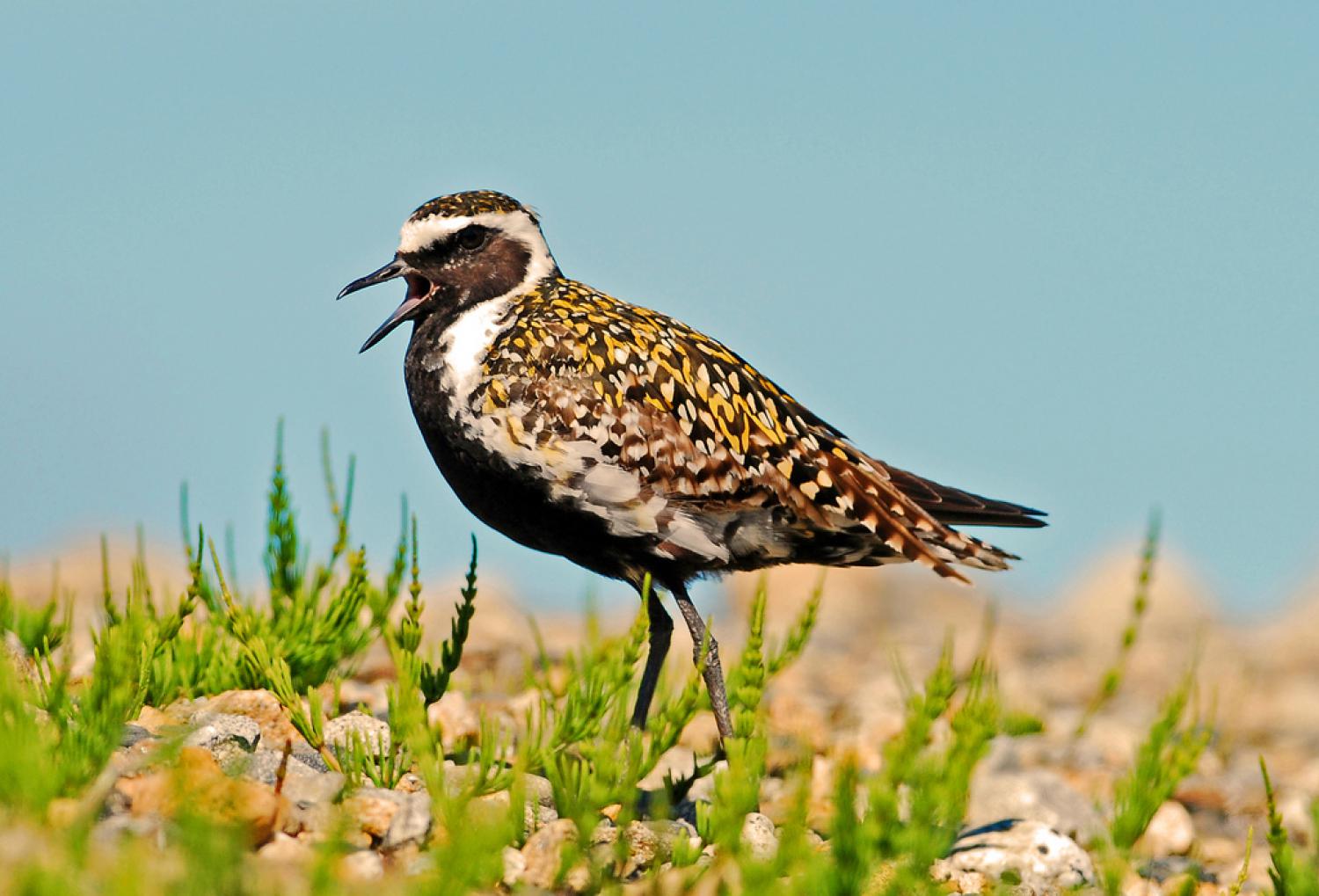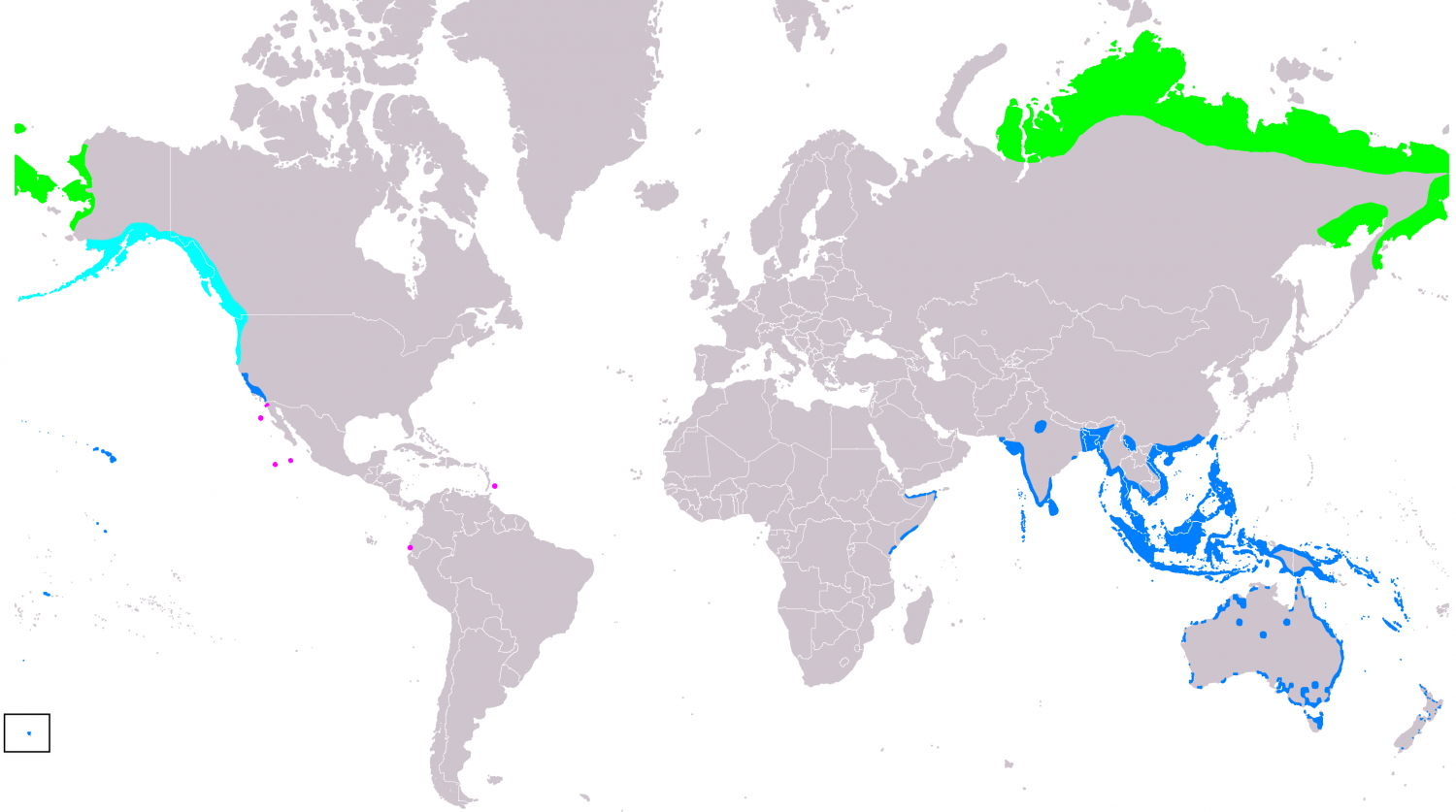Species of Thailand
Pacific golden plover
Pluvialis fulva
Johann Friedrich Gmelin, 1789
In Thai: นกหัวโตหลังจุดสีทอง
The Pacific golden plover (Pluvialis fulva) is a medium-sized plover. The genus name is Latin and means relating to rain, from pluvia, "rain". It was believed that golden plovers flocked when rain was imminent. The species name fulva is Latin and refers to a tawny colour.
The 23–26 cm long breeding adult is spotted gold and black on the crown, and back on the wings. Its face and neck are black with a white border, and it has a black breast and a dark rump. The legs are black. In winter, the black is lost and the plover then has a yellowish face and breast, and white underparts.
It is similar to two other golden plovers: the Eurasian and American plovers. The Pacific golden plover is smaller, slimmer and relatively longer-legged than the European golden plover, Pluvialis apricaria, which also has white axillary (armpit) feathers. Overall, the Pacific golden plover is found to be more similar to the American golden plover, Pluvialis dominica, with which it was once considered conspecific as "lesser golden plover". The Pacific golden plover is slimmer than the American species, has a shorter primary projection, longer legs, and is usually found to have more yellow on the back.
This wader forages for food on tundra, fields, beaches and tidal flats, usually by sight. It eats insects and crustaceans and some berries.
The breeding habitat of Pacific golden plover is the Arctic tundra from northernmost Eurosiberia into western Alaska. It nests on the ground in a dry open area.
It is migratory and winters in south Asia and Australasia. A few winter in California and Hawaii, USA. In Hawaii, the bird is known as the kōlea, and in New Zealand it is known to Māori as kuriri. It is very rare vagrant to western Europe. They return to the same wintering territory each year, which allowed scientists in Hawaii to attach tiny light level geolocator devices to the birds and then retrieve them the following year in the same location. This research revealed that these birds make the 4800 km non-stop flight between Alaska and Hawaii in 3–4 days.
This article uses material from Wikipedia released under the Creative Commons Attribution-Share-Alike Licence 3.0. Eventual photos shown in this page may or may not be from Wikipedia, please see the license details for photos in photo by-lines.
Category / Seasonal Status
Wiki listed status (concerning Thai population): Winter visitor
BCST Category: Recorded in an apparently wild state within the last 50 years
BCST Seasonal status: Non-breeding visitor
Scientific classification
- Kingdom
- Animalia
- Phylum
- Chordata
- Class
- Aves
- Order
- Charadriiformes
- Family
- Charadriidae
- Genus
- Pluvialis
- Species
- Pluvialis fulva
Common names
- English: Pacific golden plover
- French: Pluvier doré oriental
- Thai: นกหัวโตหลังจุดสีทอง
Synonyms
- Pluvialis dominica fulva
- Charadrius fulvus
Conservation status

Least Concern (IUCN3.1)
Photos
Please help us review the bird photos if wrong ones are used. We can be reached via our contact us page.
Range Map

- Amphawa District, Samut Songkhram
- Ban Laem District, Phetchaburi
- Ban Phai District, Khon Kaen
- Ban Phraek District, Phra Nakhon Si Ayutthaya
- Bang Pahan District, Phra Nakhon Si Ayutthaya
- Bang Pakong District, Chachoengsao
- Bang Phra Non-Hunting Area
- Bang Pu Recreation Centre
- Bangkok Province
- Borabue District, Maha Sarakham
- Bueng Boraped Non-Hunting Area
- Chaiya District, Surat Thani
- Chaiyo District, Ang Thong
- Chiang Saen District, Chiang Rai
- Hat Yai District, Songkhla
- Huai Chorakhe Mak Reservoir Non-Hunting Area
- Huai Talat Reservoir Non-Hunting Area
- Kamphaeng Saen District, Nakhon Pathom
- Khao Dinsor (Chumphon Raptor Center)
- Khao Sam Roi Yot National Park
- Khao Yai National Park
- Khao Yoi District, Phetchaburi
- Khlong Saeng Wildlife Sanctuary
- Ko Chang District, Trat
- Ko Libong
- Ko Samui District, Surat Thani
- Ko Sichang District, Chonburi
- Kumphawapi District, Udon Thani
- La-ngu District, Satun
- Laem Pak Bia
- Laem Son National Park
- Mae Taeng District, Chiang Mai
- Mueang Chiang Mai District, Chiang Mai
- Mueang Chonburi District, Chonburi
- Mueang Khon Kaen District, Khon Kaen
- Mueang Krabi District, Krabi
- Mueang Pattani District, Pattani
- Mueang Phetchaburi District, Phetchaburi
- Mueang Phuket District, Phuket
- Mueang Prachuap Khiri Khan District, Prachuap Khiri Khan
- Mueang Ratchaburi District, Ratchaburi
- Mueang Samut Sakhon District, Samut Sakhon
- Mueang Samut Songkhram District, Samut Songkhram
- Mueang Satun District, Satun
- Mueang Suphanburi District, Suphan Buri
- Mueang Surin District, Surin
- Mueang Tak District, Tak
- Mueang Trat District, Trat
- Nong Yai Area Development Project Under Royal Init
- Pa Sak Chonlasit Dam Non-Hunting Area
- Pak Chong District, Nakhon Ratchasima
- Pak Thale
- Pathum Thani Province
- Phi Phi Islands
- Pran Buri Forest Park
- Sai Noi District, Nonthaburi
- Samut Prakan Province
- San Sai District, Chiang Mai
- Sanam Bin Reservoir Non-Hunting Area
- Sathing Phra District, Songkhla
- Sawi District, Chumphon
- Similan Islands
- Suk Samran District, Ranong
- Takua Pa District, Phang Nga
- Tarutao National Marine Park
- Tha Takiap District, Chachoengsao
- Thai Mueang District, Phang Nga
- Thalang District, Phuket
- Thale Noi Non-Hunting Area
- Thanyaburi District, Pathum Thani
- Wat Phai Lom & Wat Ampu Wararam Non-Hunting Area


